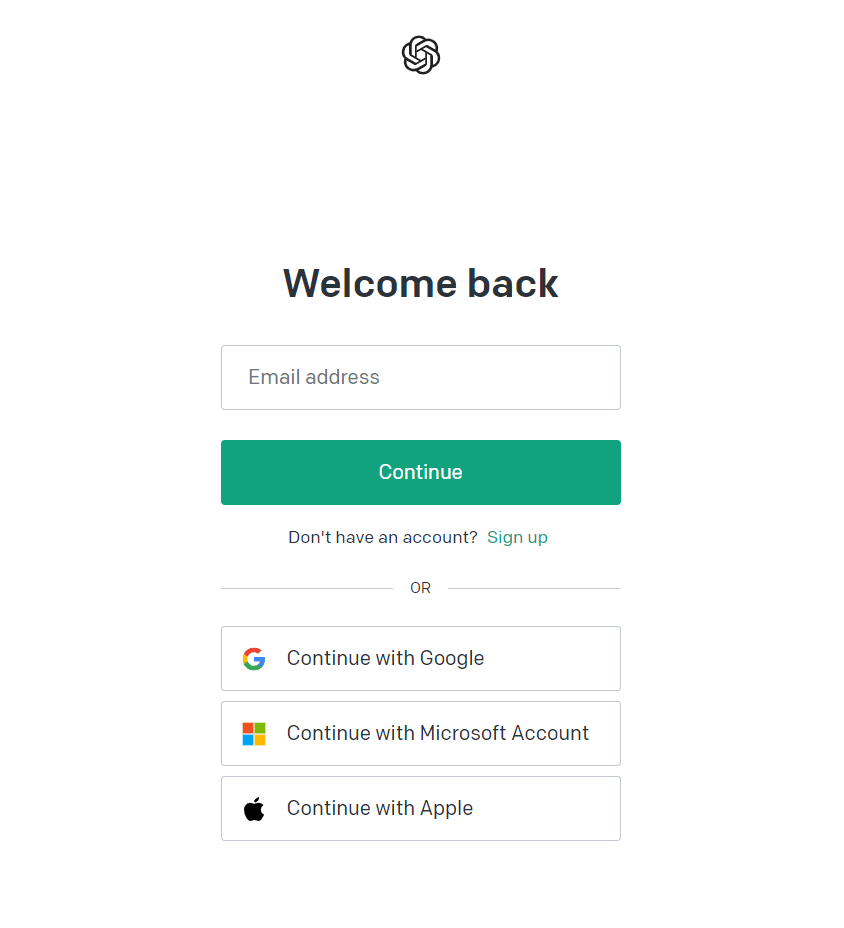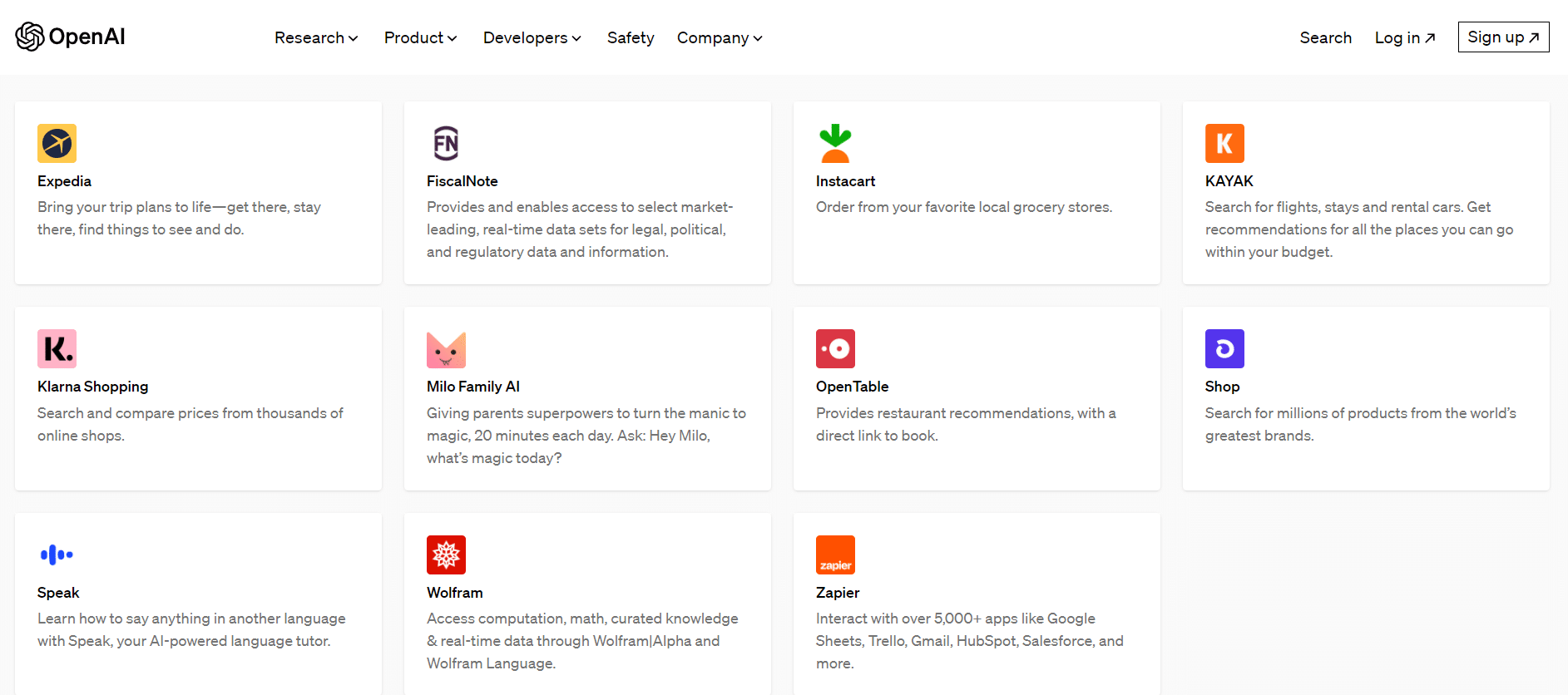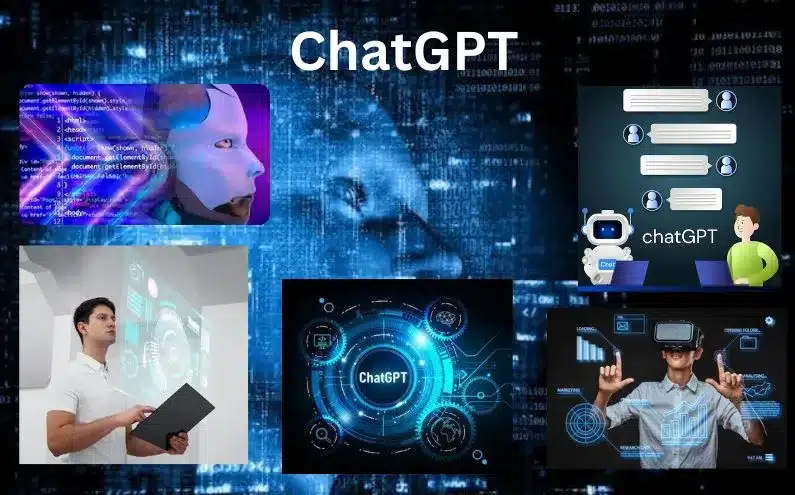Content
Who created ChatGPT?
How does ChatGPT work?
What is the Process for Accessing ChatGPT?
What kinds of questions can users ask ChatGPT?
What are the limitations does ChatGPT have? How reliable are its responses?
ChatGPT Alternatives
What does it signify when ChatGPT is currently operating at full capacity?
How Much Does Chatgpt Cost
What distinguishes ChatGPT from a search engine such as Google?
How ChatGPT Plugings Are Game Changer
Few Things To Know About Chat Gpt
What Is ChatGPT?

Who created ChatGPT?
OpenAI’s latest chatbot iteration, originating from the collaboration of Elon Musk and Altman back in 2015, possesses the ability to comprehend human speech and generate detailed textual outputs suitable for informal exchanges, much like chatting with a friend. This AI-powered chatbot system, named Chat Gpt (short for “generating pre-training”), operates online to replicate automated customer service conversations. Its architecture holds significant potential due to its capacity to produce a multitude of feasible responses.
How does ChatGPT work?
The model’s training commences with generic data and transitions to more tailored information for specific tasks. ChatGPT’s training incorporates online text to capture the nuances of human language, followed by transcript data to grasp conversational dynamics. Human trainers supply conversational interactions and rank the ensuing responses, contributing to reward models that ascertain optimal answers. Users can further engage in refining the chatbot’s prowess by offering feedback, including upvoting or downvoting responses and providing written insights to enhance and finetune its future conversational output.
What is the Process for Accessing ChatGPT?
- Visit the OpenAI Website: Navigate to the official OpenAI website (https://www.openai.com) using the web browser. This is where you’ll find access to ChatGPT and its interface.
- Access ChatGPT: On the OpenAI website, locate the section or link that provides access to ChatGPT. It might be prominently displayed on the homepage or accessible through a dedicated page or tab.
- Login or Sign Up (if required): Depending on OpenAI’s policies, you might need to log in to your existing account or create a new one to access ChatGPT.
- Select Interaction Mode: Once logged in, you’ll likely have the option to choose how you want to interact with ChatGPT. This could involve selecting a chat interface, prompt-based interaction, or other available modes.
- Input Prompts: Start a conversation by inputting prompts or questions into the provided text box. This is how you communicate with ChatGPT and initiate the conversation.
- Generate Responses: After submitting a prompt, ChatGPT will process the input and generate responses based on its trained knowledge and patterns. The responses will appear in the interface, allowing you to read and engage with them.
- Continue the Conversation: You can continue the conversation by responding to ChatGPT’s outputs with follow-up prompts or questions. This back-and-forth interaction allows for dynamic and engaging conversations.
- Experiment and Explore: Feel free to experiment with different prompts, topics, and conversation styles to explore the breadth of ChatGPT’s capabilities. You can ask questions, seek information, brainstorm ideas, draft content, and more.
- Review and Refine: As you interact with ChatGPT, review the generated responses for accuracy and relevance. If needed, you can refine your prompts or provide additional context to guide the conversation in the desired direction.
- End the Session: When you’re done with your conversation, you can simply close the browser tab or log out from your OpenAI account, depending on the platform’s interface.


What kinds of questions can users ask ChatGPT?

- Informational Queries: Users can ask factual questions about a wide range of topics, such as historical events, scientific concepts, geographical information, and more.
- Creative Prompts: Users can provide creative prompts to generate imaginative content, such as writing prompts for stories, poetry, or brainstorming ideas for projects. For example, “Write a short story about a time-traveling detective” or “Give me ideas for a new invention.
- Problem Solving: ChatGPT can assist with problem-solving by offering suggestions, explanations, or step-by-step instructions. Users can ask for help with math problems, coding challenges, or troubleshooting issues.
- Opinions and Recommendations: Users can seek opinions and recommendations on various subjects, including movies, books, restaurants, and travel destinations. They can ask questions like, “What’s a good sci-fi movie to watch?” or “Can you recommend a vegetarian restaurant in my area?”
- Language and Grammar: ChatGPT can assist with language-related questions, such as grammar corrections, language translation, and word meanings. Users might ask, “Is this sentence grammatically correct?” or “What does ‘serendipity’ mean?”
- General Knowledge: Users can inquire about general knowledge and trivia, from historical events and famous personalities to current events and trends. They could ask, “Who was Leonardo da Vinci?” or “What’s the latest news in technology?”
- Conversational Engagement: Users can engage ChatGPT in casual conversations, discussing topics of interest, sharing personal experiences, or even debating various viewpoints.
- Learning and Education: ChatGPT can help with learning new concepts by providing explanations and simplifying complex ideas. Users can ask questions like, “How does photosynthesis work?
What are the limitations does ChatGPT have? How reliable are its responses?

- Factual Inaccuracies: ChatGPT can sometimes provide incorrect or inaccurate information, as it generates responses based on patterns in its training data. It doesn’t have the ability to fact-check or verify information, so users should independently verify critical information.
- Sensitivity to Input: The way users phrase their prompts can significantly affect ChatGPT’s responses. Slight rephrasing might lead to different answers, and it can be sensitive to biased or inappropriate inputs.
- Lack of Understanding: While ChatGPT can produce coherent text, it might not fully understand the context or intricacies of complex topics.
- Long Context Handling: The model has a limited memory, so it might not consistently maintain context in longer conversations. Important details from earlier parts of the conversation can be forgotten.
- Generating Plausible-Sounding but Untruthful Content: ChatGPT can generate text that sounds accurate and logical but is not necessarily true.
- Limited Reasoning Abilities: While ChatGPT can provide explanations, its reasoning abilities are limited. It might struggle with nuanced or abstract concepts.
- Unsafe Content: Despite efforts to prevent harmful or inappropriate content, ChatGPT might occasionally produce responses that are offensive, biased, or inappropriate.
- Not a Substitute for Human Experts: ChatGPT’s responses are based on patterns in data and lack personal expertise. It’s not a substitute for consulting professionals or experts in specific fields.
As for accuracy, ChatGPT’s responses can vary. It performs well for common questions and general discussions, but its accuracy decreases for more specialized or complex topics. It’s always a good practice to cross-reference its responses with other sources, especially for critical or important information. OpenAI is actively working on improving the model’s limitations and addressing user feedback to enhance its accuracy and reliability over time.
ChatGPT Alternatives

- Microsoft Bing AI: Microsoft Bing AI emerges as a formidable alternative to ChatGPT, utilizing an enhanced model akin to GPT-4. Its Chat mode integrates web queries, facilitating contextual information retrieval and empowering users with features like multimodal capabilities, visual answers, and travel planning.
- Perplexity AI: Perplexity AI stands out as an alternative solution, trained on OpenAI’s API. Notable for its robust responses, it combines conversational engagement with source citations, offering users transparency by referencing reliable sources for every AI-generated answer.
- Google Bard AI: Google Bard AI presents itself as an experimental conversational AI service, powered by Google’s advanced PaLM 2 LLM. It has opened its doors to a wider audience, revolutionizing search with generative AI capabilities and the ability to process image inputs.
- Jasper Chat: Jasper Chat, aligned with GPT 3.5 and other models, caters to businesses in fields such as advertising and marketing. Distinguished by its professional focus, Jasper Chat offers a tailored experience for specific applications.
- Chatsonic: Chatsonic, a newcomer, expands on the ChatGPT framework by granting internet access to bolster its knowledge. This empowers Chatsonic with enhanced accuracy and the ability to remember conversations, making it more adaptable and error-resistant.
- Claude 2: Anthropic’s Claude 2 takes a distinctive approach by employing a collection of proprietary AI techniques. With Google’s backing, this conversational AI emphasizes natural communication, positioning itself as a reliable and ethical companion.
- Llama 2: The successor to Llama, Llama 2 enters the open-source realm with pre-trained and fine-tuned models across parameters, sporting enhanced context length and training on an impressive 2 trillion tokens.
- HuggingChat:HuggingChat, conceived by HuggingFace, relies on the Meta AI (LLaMA) language model, with 65 billion parameters. Despite its moderate scale, HuggingChat excels in efficiency and effectiveness, emerging as a noteworthy open-source alternative.
- Pi, Your Personal AI:Offering a unique experience, Pi distinguishes itself by employing incremental dialogues. Beyond standard chats, Pi serves as a supportive and intelligent companion, enhanced by distinct lifelike voices.
- GitHub Copilot X: For programmers, GitHub Copilot X provides a helping hand beyond auto-completion. With real-time code suggestions and function completions, it addresses coding challenges and inspires creativity.
- OpenAI Playground: While not intended for regular use, OpenAI Playground offers an avenue to explore ChatGPT-like capabilities. This web-based tool enables advanced experimentation, allowing users to customize language models and parameters for creative exploration.
- Quora Poe:Introduced in 2023, Quora Poe serves as a platform for interacting with diverse AI chatbots. Functioning as a ‘Platform for Open Exploration,’ Poe allows users to engage with and experiment across a variety of AI-powered conversations.
What ethical issues are linked to ChatGPT? Why are some people worried about ChatGPT?
- Bias and Fairness:ChatGPT can inadvertently reproduce biases present in its training data, leading to potentially discriminatory or prejudiced responses. Users may receive outputs that reflect societal biases, reinforcing stereotypes or promoting unequal treatment.
- Misinformation and Accuracy: ChatGPT’s ability to generate content can contribute to the spread of misinformation or fake news, as it lacks the capacity to verify facts. Inaccurate information produced by the model could lead to the dissemination of false or misleading content.
- Manipulation and Deceptive Content: Malicious actors might exploit ChatGPT to generate deceptive or manipulative content, such as phishing scams, fraudulent messages, or other forms of online manipulation aimed at deceiving users.
- Privacy and Data Security: : Conversations with ChatGPT might involve sharing personal or sensitive information, raising concerns about data privacy and security. Inadequate measures to safeguard user data could lead to breaches or unauthorized access.
- Unintended Harm and Offensiveness: ChatGPT’s responses can sometimes be inadvertently offensive, inappropriate, or harmful. Users may encounter content that is distressing, offensive, or triggering, posing emotional or psychological risks.
Addressing these ethical concerns requires careful design, oversight, and ongoing refinement of ChatGPT’s capabilities. OpenAI and the AI community at large are actively working to mitigate these issues through research, user feedback, content moderation, and responsible AI development practices.
What does it signify when ChatGPT is currently operating at full capacity?
How Much Does Chatgpt Cost

Furthermore, there exists a subscription plan called “ChatGPT Plus,” accessible at a monthly cost of $20.This plan includes all the benefits of ChatGPT Pro, ensuring enhanced availability and quicker response times, making it suitable for users who require consistent and reliable access to the service. These pricing plans allow users to choose the level of service that best matches their needs and usage requirements, from the basic free plan to the more feature-rich paid options.
What distinguishes ChatGPT from a search engine such as Google?
Information Retrieval:
- Google Search: Google is a powerful search engine designed to quickly and efficiently retrieve information from the web. It’s great for finding specific facts, articles, websites, and current information.
- ChatGPT: ChatGPT is a conversational AI model that can provide detailed explanations, summaries, and answers in a conversational manner. It can help with understanding complex concepts, explaining ideas, and generating text. However, it doesn’t directly search the internet like Google does.
Interactivity:
- Google Search: Google provides a list of search results based on the query, but it doesn’t engage in interactive conversations.
- ChatGPT: ChatGPT can hold interactive conversations, understand context, ask clarifying questions, and engage in back-and-forths to address user queries in a conversational manner.
Context and Explanation:
- Google Search: Google might not always provide in-depth context or explanations for search results. It’s more focused on delivering relevant links.
- ChatGPT: ChatGPT can offer detailed explanations, context, and information beyond what’s available in search results. It can break down complex topics and provide educational responses.
Subjective Queries:
- Google Search: Google might struggle with highly subjective queries or those requiring nuanced, personalized responses.
- ChatGPT: ChatGPT can understand subjective queries better and engage in conversations that involve opinions, preferences, and advice.
In summary, if you’re looking for quick, factual information from the web, Google Search is likely the better choice. If you’re seeking detailed explanations, contextual understanding, and interactive conversations, ChatGPT can be more valuable. It’s not a matter of one being definitively “better” than the other, but rather about choosing the tool that fits your specific needs at the time.
How ChatGPT Plugings Are Game Changer
ChatGPT plugins are supplementary functionalities that expand the capabilities of the AI chatbot. This feature can be accessed through the internal platform store, provided you possess a valid ChatGPT Plus subscription and ChatGPT-4 access.
While OpenAI has developed some of these plugins, a majority originate from third-party developers, offering a wide array of functions.

Few Things To Know About Chat Gpt
- Language Generation Model: ChatGPT is a language generation model developed by OpenAI. It’s powered by the GPT (Generative Pre-trained Transformer) architecture, which enables it to generate coherent and contextually relevant text based on the input it receives.
- Training Data: ChatGPT is trained on a diverse range of internet text, encompassing books, articles, websites, and other sources. It has been exposed to a wide variety of topics and writing styles, allowing it to generate text on a wide array of subjects.
- Conversational Abilities: ChatGPT is designed to engage in text-based conversations. It can understand and respond to prompts in a conversational manner, making it suitable for tasks like providing information, answering questions, and engaging in discussions.
- Context Sensitivity: The model’s responses are influenced by the context provided in the conversation. It considers the preceding messages to provide coherent and contextually appropriate responses. However, it might not always maintain perfect context in longer conversations.
- No Inherent Understanding: ChatGPT doesn’t possess genuine understanding or consciousness. It generates text based on patterns it has learned from training data, but it lacks true comprehension or awareness of the content it produces.
- Fine-Tuning: OpenAI fine-tunes the base GPT models for specific use cases, including ChatGPT. This involves training the model on a narrower dataset with human reviewers providing feedback to help align the model’s outputs with OpenAI’s guidelines.
- Ethical and Responsible Use: It’s important to use ChatGPT responsibly and ethically. While it can be a valuable tool for various tasks, it’s essential to verify information it provides, especially for critical applications. Additionally, being cautious with potentially sensitive or controversial topics can help ensure the generated content is appropriate and accurate.
As AI evolves, ChatGPT remains at the forefront, enhancing conversational AI and offering a preview of the evolving landscape of human-AI cooperation. Its features, applications, and potential for integration make ChatGPT a significant milestone in AI advancement, fostering a future where human-machine collaboration reaches new heights.

